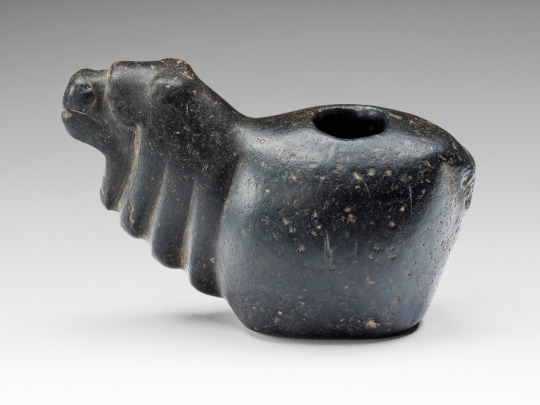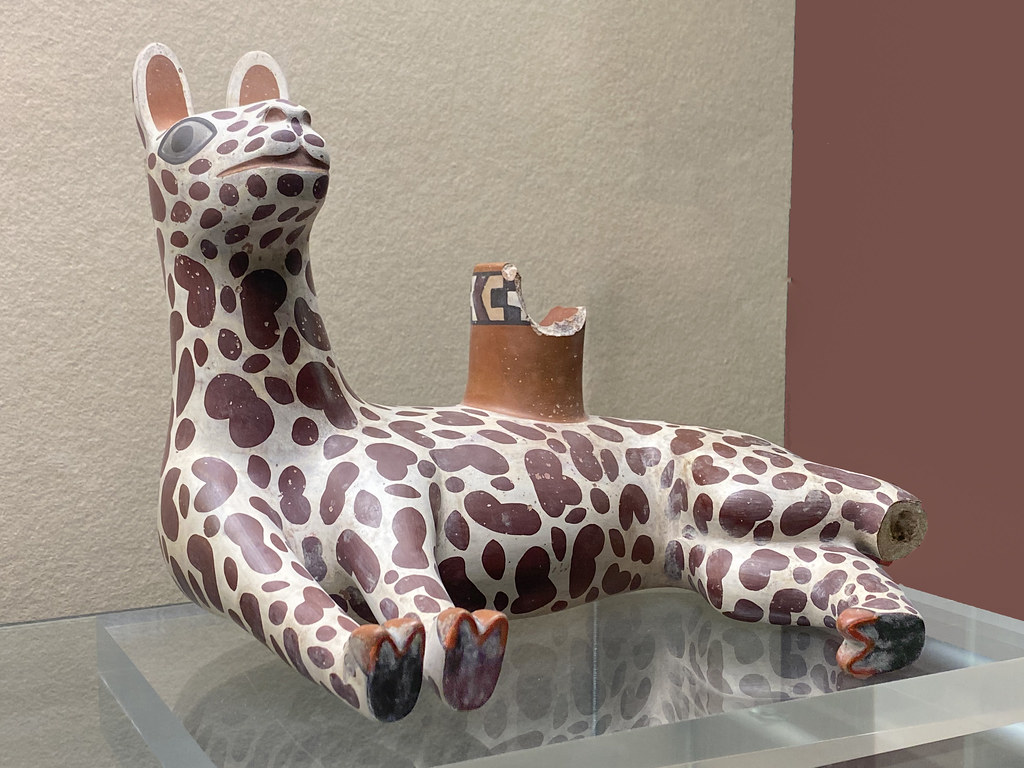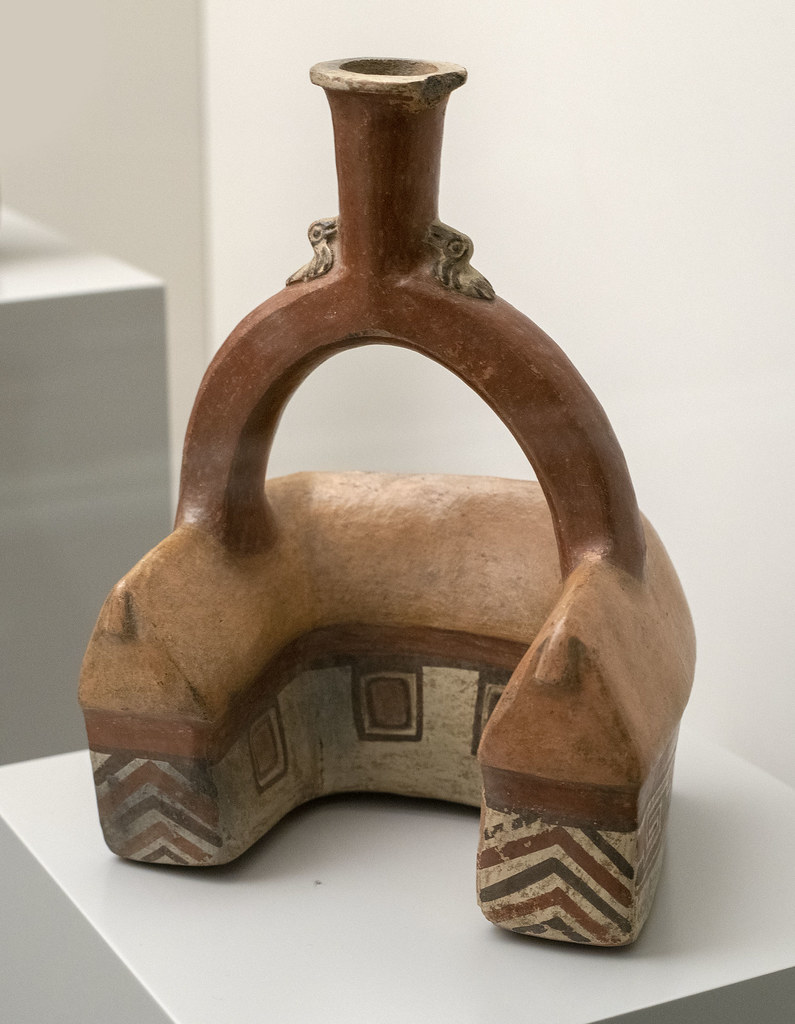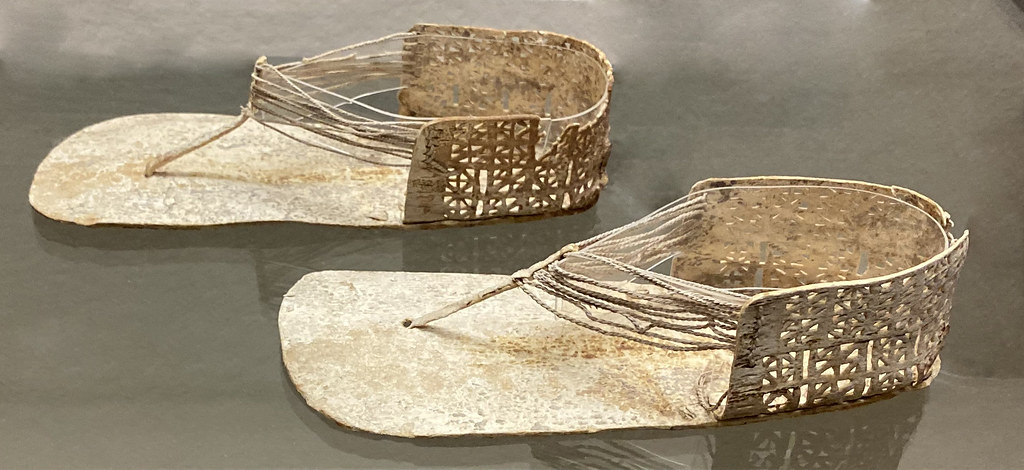#heartifactz
Text


Feline Bowl from the 14th - early 16th century made during the time of the Inka Empire (Tawantinsuyu).
[image description: a square-ish bowl with a carved cat head sticking out of one end and a tail sticking out of the other. On the bottom of the bowl are stubby paws. End ID]
@citruscity added your ID to the original, thank you!
9K notes
·
View notes
Text

Uncu from the 17th century made after the Fall of the Inka Empire (Tawantinsuyu) during the time of the Viceroyalty of Peru (Spanish Imperial District).
57 notes
·
View notes
Text

Serpent Ornament from 1450-1532 CE (15th-16th century) made during the time of the Inka Empire (Tawantinsuyu).
[image description: a flashy, woven and lumpy snake with multicolor zigzags all over its body. it has an added rope at the tail end to launch it into the air. end ID]
This specific ceremonial element is believed to have been made by people living in Chincha (on the coast), who had recently come under Inka rulership.
I highly recommend reading the whole article in the link!
#tawantinsuyu#heartifactz#chincha#amaru#mach'aqway#15th century#16th century#image described#inka empire#machaku
21 notes
·
View notes
Text
... AHEM.
this is a note to be passed from a descendant of historic quechua populations to private collectors (fuck you guys) and museums (fuck you guys too) of all conopas / sacred familial vessels for offerings.
most were taken from andean families since colonization and none were ever meant to be stolen.
they sit and wait like dogs for their families. that may never be able to come back to offer them the gift of life.

if their origin / source cannot be found then they should be buried in a dedicated space. they are sacred vessels, meant for much more than gathering dust on shelves, and should be allowed to continue their sacred duty as guardians.




i stress .. reburial over scientific interest.
[text description 1:
"... particular gods were. in 1617, for example, three jesuit padres reported that they had collected 2,500 conopas in the chancay region alone.¹¹"
excerpt from idolatry and its enemies: colonial andean religion and extirpation, 1640-1750 by kenneth mills. end ID]
[image description 2: four conopas with recognizable holes for the placement of offerings carved in the shapes of four alpacas. the one on the upper right is smaller than the rest. three are black and one is red (bottom left). end ID]
these conopas can be found on the art institute (of chicago) website by clicking on view collection and searching "alpacas".
#like to charge reblog to cast#repatriation#archaeology#tw colonization#heartifactz#the sacred objects are not for the amusement of yuraqkuna#— research
11 notes
·
View notes
Text

Jaguar-shaped Vessels by A. Davey
from 650-700 C.E.* made by Wari (left side) & Muchik (right side) people living in the ceremonial site of Pachakamaq.
[image description 1: two small scale ceramics. both were made out of an earthy material with excellent craftsmanship. the one on the left has a rustic reddish brown color. the body is rounded and the legs jut out diagonally to support it. the face of the cat has very little detail on it. it has a flared spout on its back and has alternating white and black patterns, forming spots, stripes and rectangles around the spout. end ID]
[image description 2: the one on the right has a sandy, glossy appearance. characteristic of andean ceramics, it has a donut-shaped stirrup spout on its back. the jaguar's rosettes with dots and stripes were painted with an orange glaze. it has a chipped ear. unlike the other vessel, it has a very defined rounded face. its body is more rectangular and stocky, and it has stubby legs. end ID]
*rough estimate: from the chronology of the site, and the coexistence between the Wari & the Muchik.
#heartifactz#wari culture#moche#pachacamac#pottery#jaguar#panthera onca#uturunku#image described#archaeology
35 notes
·
View notes
Text
Wari Ceramic Vessel in Shape of Llama by A. Davey
from 600-1100 A.D. made by people of the Wari culture? It isn't too clear.
[Image Description: A vessel shaped to resemble a llama. The llama is lying down with its legs out in front of it and its head raised. Its left hindleg is broken. A small chipped, rustic red spout sticks out from its body. It has detailed painted features: a white body, wide open black eyes, pink ears, orange toes, and covered in brown splotches like that of a dalmatian. End ID]
#i'm crying?#okay so A. Davey has a TON of pictures like this#and it's really got me feeling something deep#photos of artifacts i've never seen#heartifactz#llama#wari#wari culture#image described
9 notes
·
View notes
Text

Ornamented Knife (tumi) from the 15th - early 16th century made during the time of the Inka Empire (Tawantinsuyu).
[Image Description: A semicircular blade (tumi) made from tin bronze. The handle of the knife is made to resemble a bird of prey's four talons. The shaft of the tumi is textured to appear like the bird's bumpy skin. The blade also has a green tint, signs of age, and impressions of the cloth it was wrapped in. End ID]
10 notes
·
View notes
Text
Vasija by Ángel M. Felicísimo
from 1470-1532 A.D made by people of the Inca-Chimú culture.
[Image Description: A tan, reddish stirrup-spout bottle made to look like a house. The vessel is symmetrical, with two birds resting at the top on both sides of the spout. The house is shaped like a horseshoe. The features of the house include the roof, the windows, and upward arrow markings painted at each end. End ID]
12 notes
·
View notes
Text

Ceremonial Knife (Tumi) from the 15th - 16th century made during the time of the Inca Empire (Tawantinsuyu).
4 notes
·
View notes
Text
Nazca Sandals by A. Davey
from 100-700 A.D. made by people from the Nazca region, on the south coast of Peru.
#it appears this A. Davey fellow has quite a lot to share!#heartifactz#nazca#indigenous fashion#to be described
5 notes
·
View notes
Text
Spondylus Shell Necklace by A. Davey
from (100-700 A.D.?) made by people living in the Nazca region, on the south coast of Peru.
3 notes
·
View notes
Text
this place? this may be where i was born but its sure as hell not my home. it's never called to me.
it's a temporary woodland for a migrating fawn. home is to the southeast...
home is where the heart is. my heart is in peru, right where it should be. i want to return to the lands of my family when i die. that is where my heart will decay unto the earth, that is where i will die.
i miss being humbled in the mountains and feeling rain and wind pour while the tourists scurry under shelters repurposed from older homes. the altitude sickness that keeps you on your feet and reminds you that it will be there for you.
catching my first scent of llama and alpaca and knowing the love they embody.
walking for hours to a beach that closed years ago but still seeing the ocean.
being in my bisabuela's house and the smell of her tile floors, old walls and the iron gates that bid us farewell.
speaking in a young tongue, and secretly eating the fruits of knowledge. so that i would carry with me, an older tongue to someday scatter the seeds of the tree.
when i wear clothes that honor my andean heritage and my gender expression, i feel at home. i feel welcomed. i feel responsible.
the experiences that mattered to me aren't the tailored shit that tourists love so much, they're real. they're raw and they stabilize me.
1 note
·
View note



